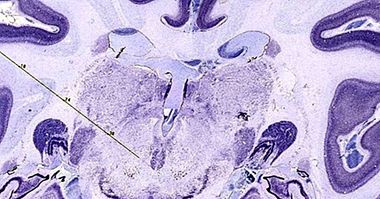What does the color pink mean in Psychology?
In Western culture, the color pink has traditionally been associated with sweetness, tenderness and the romantic. But where does this come from? As with other colors, the color pink is closely linked to values and practices of our culture, which perpetuate generate social codes and individual perceptions about the objects of the world.
The above has been extensively investigated by the psychology of colors, thus generating different answers about the meanings of the color pink , and about its connotations or effects in cultural terms. We will see below a brief description of this.
- Related article: "Psychology of color: meaning and curiosities of colors"
Psychology of the chromatic
Among other things, the psychology of colors has taught us that Chromatic stimuli are an active part of our development . They are found in our environment and, moreover, they are not neutral stimuli: they are loaded with cultural meanings, while allowing us to evoke sensations, perceptions, thoughts, ideas, judgments, attitudes, and so on. That is, they generate effects at the psychological level.
They can even predispose us to act, for example, if we find a red signal it is likely that our alarms are automatically activated in the nervous system and we will prepare to flee before possible damage. Or, without necessarily being aware of it, colors can influence the aggregate we feel towards certain objects , which finally has consequences in our approach to these.
This is so because through perceiving colors, we activate certain impressions on objects, that is, through them we can condition our perception of what surrounds us. The above occurs because of the symbolic meanings we have placed over time.
For example, during the association of colors with natural phenomena and elements, and also through their association with cultural variables. Goethe already said that colors, which are finally sensorial encodings of the decomposition of natural light, produce an individual effect always linked to the moral sphere. So that, the colors carry social codes and they carry with them the opportunity to establish taxonomies and individual positions, in permanent link with social norms.
Specifically, the pink color is obtained from the mixture between red and white, and its name in Spanish comes from the varieties of roses that have flourished in many parts of the world. This word comes from Latin and Greek, which were used to name the same flower, and come in turn from a proto-Indo-European root meaning "hawthorn".
- Maybe you're interested: "What does the color red mean in Psychology?"
Meaning of the color pink in psychology
According to the research of Eva Heller (2004), a pioneer in the studies on color psychology, the pink increases your preference index according to the age of the people . Being a youthful color, it is usually valued by older people.
Likewise, it tends to evoke positive feelings related to kindness, delicacy, softness, as well as childhood and daydreaming. However, this itself generates an ambivalent meaning, because It is also related to "the corny", which can cause rejection for several people .
The above becomes more complex when the rose is mixed with other colors. For example, next to white can represent innocence; and next to black and violet can relate more to eroticism and seduction. Also when mixed with black can be associated with the tensions between the delicate and the rough, sensitivity and insensitivity.
To study the above, Manav (2007) evaluated the relationship between emotions and chromatic stimuli, finding that sensations of enjoyment, joy and warmth they were related to the stimuli of pink and yellow, mainly.
Something striking was the practical use derived from this association. For example, participants showed a preference for placing the color pink inside their rooms, and especially in the rooms where children sleep.
Some cultural connotations of this color
We have seen that in the western culture the pink color has traditionally been related to the ethereal, the sweet and the pleasant, the love, the tenderness and the innocence . It has also been associated with optimism, what we see, for example in phrases like "everything is pink".
On the other hand, in Catholicism, the color pink has been used to represent joy, and in some countries also of the West, the political use of pink or light red symbolizes socialism.
In addition, the pink color in some eastern countries such as Japan has an association with eroticism , while in Western Europe it is related to novels and romantic stories as well as to the private environment and intimacy. On the other hand, in feng shui (which relate colors to everyday activities), the color pink is linked to marriage and emotional ties.
The rose and gender stereotypes
The above has connected closely with the Western imaginaries of the feminine , that have finally perpetrated a series of gender stereotypes. In this context, the color pink has been linked to values associated with femininity, and has had an important impact on binary gender education.
This is visible, for example, in the entire range of products for girls and women that are presented by this color. From the first toys and the simplest accessories to personal hygiene tools, the objects of the domestic space, or the festivities related to motherhood and love .
Regarding the meanings associated with the color pink and its gender differences, Rivera (2001) found that women associate the rose with "tranquility" and with the adjectives "pretty", "tender" and "cute". On the other hand, the men related the rose with "pig", "babies", "sausage", "meat", "ugly", "woman", "ham", "nothing" and "horrible". The participants of their study had in common the association of rose with "tenderness", "skin", "girl", "love" and "cake".
Some studies on the history of the use of colors indicate that the marked gender symbology of rose began in the late nineteenth and early twentieth centuries in Western Europe and the United States; when care homes for abandoned children began to differentiate children with blue and pink respectively. In more recent times, from sexual revolutions and gender claims, the color pink has gradually modified its uses , normalizing for example that is worn in men's clothing.
Bibliographic references:
- Clarke, T. and Costall, A. (2008). The Emotional Connotations of Color: A Qualitative Investigation. Color Research and application, 33 (5): 406-410.
- Heller, E. (2004). Color psychology. How colors act on feelings and reason. Editorial Gustavo Gili: Spain.
- Koller, V. (2008). 'Not just a color': pink as a gender and sexuality marker in visual communication. Visual communication, 7 (4): 395-423.
- Llorente, C. (2018). Comparative analysis of the chromatic symbology in advertising. Nike in China and Spain. Vivat Academica. Journal of Communication, 142: 51-78.
- Manav, B. (2007). Color-Emotion Associations and Color Preferences: A Case Study for Residences. Color Research and Application, 32 (2): 145-151.
- Rivera, M. A. (2001). Perception and meaning of color in different social groups. Image Magazine, 53: 74-83.



















